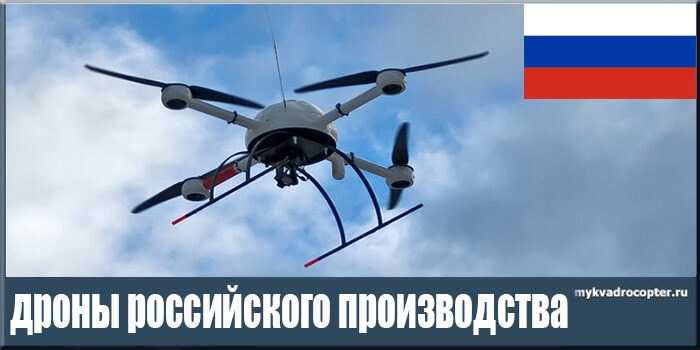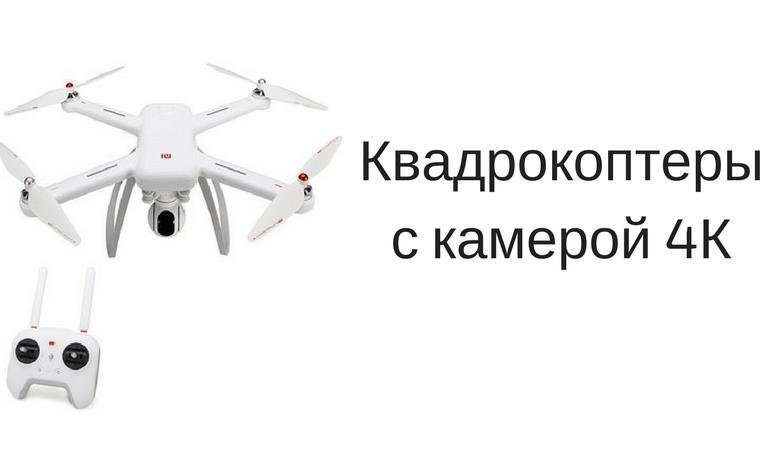- Introduction
- Are security clearances different from country to country?
- Background
- Controlled firing areas
- Did you know…?
- Do countries change how the icao standards are used?
- F. air defense identification zone (adiz)
- G. wildlife refuge
- H. wildlife sanctuary
- How has airspace been standardized?
- How i learned airspace
- How were security questions determined?
- Not all airspace is the same
- Parachute jump areas
- Part 1: security clearances
- Special use airspace – wikipedia republished // wiki 2
- The airspace abcs
- Types of airspace
- Uncontrolled airspace
- What is class a airspace?
- What is class b airspace?
- What is class d airspace?
- What is class e airspace?
- What is class f airspace?
- What is class g airspace?
Introduction
Knowledge of airspace classes is essential for all pilots.ICAO standardized these classes with rules and regulations. They include Class A, B, C, D, E, G, and special use airspace. Most importantly, these designations define clearance requirements, minimums, and dimensions.
Pilots may need to adjust altitude and speed depending on the section of airspace they’re flying in. Also, ATC may require radio contact or communications. Because airspace categories differ, you must learn how to recognize them on charts. Furthermore, you must understand the detailed requirements of each. Besides, authorities established airspace classes to keep you safe. Above all, safety first!
Are security clearances different from country to country?
Yes! Because of the conflict, we had to be extra vigilant before entering either Turkey or Cyprus airspace. Not reporting our positions could cause us severe consequences. Therefore, we prepared for radio silence nearing Turkey and Cyprus FIR boundaries.
In Cyprus, armed security guards greeted us. They instructed us to remain in the Citation jet. The guards requested aircraft, crew, and passenger documents. Next, we were escorted to a small building where we entered a locked room with one computer. The guard instructed us to enter all our information onto this computer.
He then stated that once our information was verified, the computer would generate 3 VERY IMPORTANT security questions. The guard further explained. Before we received permission to enter Israeli airspace, we must answer these same questions EXACTLY as entered on this computer. Additionally, we would have to enter our special security code.
Background
In Airspace Part 1, I described airspace issues we faced during my world flight. “We departed from Yerevan, Armenia (UDYZ) in the Citation jet and arrived into Tel Aviv, Israel (LLBG). My pre-flight briefing with the crew included news that, once airborne, we would receive a mandatory security stop. This would occur before being allowed into Israel airspace.”
Controlled firing areas
Controlled firing areas contain military activities, which, if not conducted in a controlled environment, could be hazardous to nonparticipating aircraft. The difference between controlled firing areas and other special use airspace is that activities must be suspended when a spotter aircraft, radar, or ground lookout position indicates an aircraft might be approaching the area.
Did you know…?
Drones, or unmanned aircraft systems (UAM), must adhere to airspace rules, too. For instance, the FAA prohibits flying drones over rescue or emergency operations, such as hurricanes and wildfires. Small drones can only fly up to 400 feet AGL.
By Captain Judy Rice, Epic Ground School Instructor
Read more articles by Captain Judy Rice!
Do countries change how the icao standards are used?
Yes. The the ICAO divided the world’s navigable airspace into three-dimensional segments. However, some countries chose a two-dimensional approach. They assigned each of these dimensional segments a specific class. Each class has its own rules and regulations.
Most nations use a version of the ICAO classifications. These include: Class A, Class B, Class C, Class D, Class F, Class E, and Class G. Class F, special use airspace (SUA), is the most widely modified airspace. Many nations, including the U.S., choose their own special use airspace rules and requirements. This includes uncontrolled airspace.
So, are you wondering about the answers to those VERY important security questions? We each answered one question. First, I chose red as favorite color. Next, our first officer chose pita, his favorite food. Lastly, the relief pilot chose his wife, Valentina, as the important person.
Although experiencing numerous changes from the ICAO airspace standardization, it helped me safely navigate the globe.
F. air defense identification zone (adiz)
Air Defense Identification Zones (ADIZ) include monitored airspace. For example, authorities monitor the identification, location, and control of civil aircraft. This is in the interest of national security. Pilots must file under Instrument Flight Rules (IFR) or Defense Visual Flight Rules (DVFR) before entering or departing the U.S. This can be over land or water.
Airport Advisory Areas occur at non-towered airports with a Flight Service facility. Flight Service provides advisories upon request within 10 NM on the Common Traffic Advisory Frequency (CTAF).
G. wildlife refuge
A Wildlife Refuge is specific to land management for wildlife, such as migratory birds. Authorities request that pilots remain 2000’ above ground level (AGL). For example, the Merritt Island National Wildlife Refuge near Cape Canaveral, is a special use area.
H. wildlife sanctuary
A Wildlife Sanctuary is an area established to preserve a species. Authorities require flight activities to remain 1000’ AGL. In other words, do not disturb the wildlife!
How has airspace been standardized?
In 1941, the United Nations formed the International Civil Aviation Organization (ICAO) to create standards. This included recommended practices concerning air navigation. As worldwide air travel increased, so did the need for safety. Standardized airspace for pilots and air traffic controls increase safety.
How i learned airspace
Airspace may be one of the most complex and important topics that a pilot needs to understand. Learning airspace can seem overwhelming at first with a lot to remember. How did I tackle learning about airspace? I realized that for each airspace classification there are only 3 topics to remember: dimensions, equipment, and Visual Flight Rules (VFR) weather minimums. I then discovered some of these airspace dimensions have the same VFR weather minimums and equipment requirements.
Student pilots were not always so fortunate to have the Internet or cell phones for studying. Students now use online flash cards to study airspace and other topics. I studied airspace before computers and cell phones. Making my own index cards, I placed the classification on the front.
I then put the dimensions, weather minimums, and requirements on the back. I took these flash cards with me everywhere! Waiting in the grocery store line or having car maintenance? No problem – I had my flash cards. I purchased a cassette tape on airspace (today it’d be an MP3), and listened in the car or while doing housework. I focused every spare moment on learning airspace.
How were security questions determined?
After entering all our documentation, we held our breath and prepared for the 3 questions. My first officer prepared to copy our answers and the special code. We hovered around the computer trying to guess what these VERY important questions could be.
We were amazed by the first question. “What is your favorite color?” (Really!?) The second and third questions had to be the serious questions, and this must be the trick question. However, the second question was, “What is your favorite food?” (Seriously?!)
The guard escorted us back to the Citation jet, and after a pre-flight, ATC cleared us for departure. We were ready with our VERY important security answers and security code as we switched from Cyprus to Israeli controllers. Israeli controllers finally asked our security questions after a long wait, with almost twenty minutes of heading changes and reporting points.
My first officer answered when finally asked our three VERY important security questions and security code. Once Israeli controllers deemed we were not a security threat, their communications became friendly, always ending with “shalom,” meaning “peace.”
Not all airspace is the same
Certainly, my world flight would have been unlikely without clearly designated airspace. Because of the efforts of the International Civil Aviation Organization (ICAO), flying internationally has become much safer. In 1941, the United Nations formed ICAO, and they established a standard, organized three-dimensional airspace system.
Parachute jump areas
Parachute jump areas are published in the Airport/ Facility Directory (A/FD). Sites that are used frequently are depicted on sectional charts. Each pilot should listen to the appropriate airport radio frequency for parachute operations and be alert for aircraft which might be conducting parachute operations.
Part 1: security clearances
We filed the Citation jet’s route departing from Yerevan, Armenia (UDYZ) to Tel Aviv, Israel (LLBG). During our pre-briefing, ATC shared we would receive more information once airborne. In other words, we expected an assigned, mandatory security stop before being allowed into Israel airspace.
Special use airspace – wikipedia republished // wiki 2
Special use airspace (SUA) is an area designated for operations of a nature such that limitations may be imposed on aircraft not participating in those operations. Often these operations are of a military nature. The designation of SUAs identifies for other users the areas where such activity occurs, provides for segregation of that activity from other users, and allows charting to keep airspace users informed of potential hazards. Most SUAs are depicted on aeronautical charts and FAA maintains a page[1] showing the current status of most SUAs.
Special use airspace includes: restricted airspace, prohibited airspace, military operations areas (MOA), warning areas, alert areas, temporary flight restriction (TFR), national security areas, and controlled firing areas, typically up to FL180 or 18,000 ft above sea level. In addition there is often an Air Traffic Control Assigned Airspace (ATCAA) from FL180 through FL600 in which ATC plans for military operations. ATCAAs are generally not depicted on charts because flights above FL180 are subject to mandatory instrument flight rules operation requiring continuous contact with ATC. Alert areas may contain high volume of pilot training or an unusual type of aerial activity. MOAs (located over land) and warning areas (located over domestic or international waters or both) and training routes contain high volumes of military activity.
Flights within restricted areas are only allowed with specific FAA clearance and may be subject to restrictions, while in prohibited areas flights are forbidden except in emergency situations. Flying in MOAs or Warning Areas is allowed by non-military aircraft without clearance, but can be hazardous.
The airspace abcs
ATC approved our Instrument Flight Plan (IFR) as filed for the Citation jet. We were departing Le Bourget, France (LFPB). Our destination was Madrid-Cuatro Vientos airport (LECU). Once we crossed the Federal Information Region (FIR) boundary, ATC cleared us from FL320 (32000’ MSL) to 7000’ MSL. Next, they smoothly handed us over from the French airspace control to Spanish control.
Our descent took us over the Pyrenees mountains and two major rivers, the Ebro and Tagus. We saw Madrid from a distance, perched on a plateau of sand and clay. The breathtaking panorama revealed rivers weaving between the valleys and forests next to the brown mesa of Madrid.
Madrid was an extra special stop. Fly & Fun Flight School had participated on my world flight internet broadcasts for more than 5 years. We had all prepared for this day. For the first time, I was meeting these students in person along with the flight school owner, Julio de Zavala. What excitement when the Citation jet landed!
Types of airspace
First of all, the FAA has identified three types of airspace in the U.S. They are controlled, uncontrolled, and special use. Second, each category includes specific airspace use. For example, controlled airspace includes Class A, Class B, Class C, Class D, and Class E.
Uncontrolled airspace
Class G (Golf), prior to 1993, known as Uncontrolled AirspaceThere are 3 dimensions:
- From surface to below 14,500’ MSL
- Surface to below 700’ AGL
- Surface to below 1,200’ AGL
Above 10,000 MSL:
- Transponder mode C with altitude reporting, Automatic Dependent Surveillance-Broadcast (ADSB) In or Out
- Aircraft Speed: Mach 1
- VFR weather minimums (1-1-1-1): 1 SM visibilities with cloud clearances 1,000’ above, 1,000’ below, 1SM horizontal of the clouds
Below 10,000 MSL:
- No special equipment
- Aircraft Speed: maximum of 250 Kts
- VFR weather minimums:
- DAY (1-1-5-2): 1 SM visibilities with cloud clearances 1,000’ above, 500’ below, and 2,000’ horizontal of clouds
- NIGHT (3-1-5-2): 3 SM visibilities with cloud clearances 1,000’ above, 500’ below, and 2,000’ horizontal of the clouds
Below 1200’ AGL, VFR weather minimums:
- DAY 1 SM visibilities, remain clear of the clouds
- NIGHT (3-1-5-2): 3 SM visibilities with cloud clearances 1,000’ above, 500’ below, and 2,000’ horizontal of the clouds
- NIGHT remaining within 1/2 mile of the airport: 1 SM, remain clear of the clouds
Below 14,500 MSL, VFR weather minimums (1-1-1-1):
- 1SM visibilities, cloud clearances 1,000’ above, 500’ below, 2,000’ horizontal of the clouds
In the United States, some student pilots find airspace to be a difficult topic. However, it just takes a little effort to learn. During my world travels, students from other nations are often amazed at the freedom for flight in the U.S.
What is class a airspace?
- Extends from 18,000 feet (5,500 m) MSL to FL600.
- Applies to contiguous United States and Alaska.
- Flight levels depend on local atmospheric pressure variations.
- ATC controls all flight operations, because this is controlled airspace.
- Pilots must operate as IFR under a clearance received prior to entry.
What is class b airspace?
- “B” is for “busy,” because Class B airspace is found around the busiest airports; for instance, New York and Atlanta.
- Pilots must obtain ATC clearance prior to entry, because Class B is controlled airspace.
- Aircraft must be equipped with a two-way radio
- Also, aircraft must have an operating Mode C transponder, and automatic altitude reporting equipment.
- Exact shape of the airspace varies from one class B area to another.
- Usually shaped like an inverted wedding cake.
- Has series of circular ‘shelves’ of airspace of several thousand feet in thickness, and each is larger than that beneath.
- Centered on a specific airport.
- Normally begins at the surface in the immediate area of the airport.
- Successive shelves of increased radius begin at higher altitudes at greater distances from the airport.
- Some flexibility to accommodate traffic patterns, local topology, etc.
- Upper limit of class B airspace is normally 10,000 feet MSL.
What is class d airspace?
- Found at any airport with a functioning control tower, but with few IFR approaches.
- Typically shaped like a cylinder extending from the surface to 2,500 feet above the ground.
- Excludes airspace within the given radius, except in surrounding Class C or Class B airspace.
- Reverts to Class E or G during hours when the tower is closed.
- Establish two-way communication with ATC before entering, because it is controlled airspace.
- No transponder is required.
- VFR cloud clearance and visibility requirements are the same as Class C.
What is class e airspace?
- Most airspace in the United States is class E.
- No ATC clearance or radio communication required for VFR flight. However, Class E is controlled airspace.
- VFR visibility and cloud clearance requirements are the same as for class C and D airspaces when below 10,000 feet MSL.
- Above 10,000 feet MSL, visibility requirement extended to 5 miles.
- Cloud clearance requirement extended to 1,000 feet below clouds, and 1,000 feet above, and 1 lateral mile.
- Includes airspace above FL600.
What is class f airspace?
- Not used in the U.S., due to special use areas.
- In Canada, Class F is equivalent to special use airspace in the U.S.
- IACO considers it a hybrid of Class E and Class G.
What is class g airspace?
- Uncontrolled airspace, therefore no radio communication required.
- All airspace below 14,500 feet MSL that is not otherwise classified as controlled.
- No entry or clearance requirements, not even for IFR operations.
- Typically this is the airspace very near the ground (1,200 feet or less). Furthermore, it is beneath Class E airspace, and between class B-D cylinders around towered airstrips.
- VFR visibility requirements: 1 mile by day, 3 miles by night for altitudes below 10,000 feet but above 1,200 feet AGL.
- 5 miles visibility required beginning at 10,000 feet MSL, day and night.
- Cloud clearance requirements: maintain altitude 500 feet below, 1,000 feet above, 2,000 feet horizontal. At or above 10,000 feet MSL, 1,000 feet below, 1,000 feet above, and 1 mile laterally. By day, at 1,200 feet AGL, and below, remain clear of clouds, and no minimum lateral distance.
Due to obvious safety issues, pilots must understand all aspects of airspace classes, and they must comply. Most importantly, ICAO created airspace classes because of safety concerns. Consequently, air travel remains highly respected as a safe mode of travel.
Furthermore, special circumstances arise that require temporary adjustments to airspace. When in doubt, find out. Above all, contact ATC if there is any question about your location and your right to be there. As a result, you will always find yourself in the right place at the right time!







